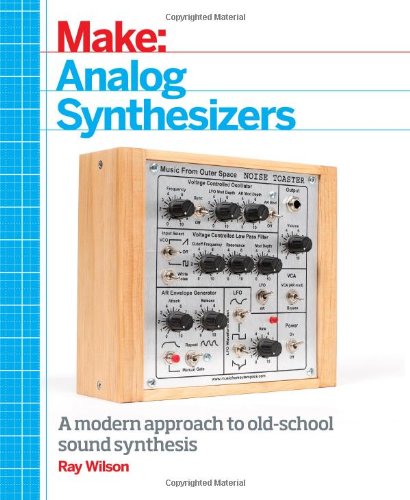I just finished my x0xb0x synth. It is a Roland TB-303 clone which was originally developed (or reverse engineered) by Limor Fried at adafruit. The kit I built was from willzyx.com.
The timelapse video below shows the complete build. It took me about 10 hours to complete the synth, and luckily it worked straight away.
I am sorry about the rubbish soundtrack in the video. It was just about the first sound coming out of the box recorded and produced live in a really amateurish way (in other words, it is DIYcrap).
Anyway, it was a really fun kit to build. Although the kit consists of more than 500 components, it is fairly simple to build as long as you keep everything in order. All parts came in clearly labeled bags and not a single piece was missing from the kit. Willzyx is highly recommended!
Wednesday, February 12, 2014
Sunday, February 2, 2014
Noise Toaster
A couple of months ago I purchased the book Analog Synthesizers by Ray Wilson. I was intrigued by the book and quickly decided to build the beginners kit of a DIY Analog Synthesizer presented in the book, the Noise Toaster.
I already had a plastic enclosure and a bunch of components, so I decided to order just the PCB from Ray Wilson, and not the whole kit. Ray Wilson is sort of a DIY analog synth guru and runs the web page http://www.musicfromouterspace.com/. The web page consist of all the information you need to build the Noise Toaster. However, I highly recommend to buy the book. It is well written, and I think the guy deserves some extra dollars for running his highly informative web-page.
The Noise Toaster consists of about 150 components, and is a fairly easy build. The only thing i forgot while ordering parts was that the design uses a lot of E24 resistors (which I did not have) and some bipolar capacitors (which are hard to get). Besides that, the components are fairly standard.
The only problem I had after the assembly was that the white noise generator did not work at all. I traced it down to the 2n3904 transistor Q5 which was not actually generating noise. I recommend to breadboard the white noise generator to make sure you select a 2n3904 which generates sufficient white noise. Two of the transistors I tried did not actually work as white noise generators. After soldering up the PCB and mounting the switches and pots, I fired it up and enjoyed the nice sound of the synth with all its squeals and noises.
The Noise Toaster runs of a 9V battery, which must be mounted securely inside the box. I downloaded a design for a 9V battery holder from Thingiverse, printed it on my 3D-printer and "glued" it to the bottom plate with sugru. For the speaker, I drilled a 50mm hole and mounted the speaker (again with sugru).
Since my plastic enclosure was way smaller that the design presented in the book, I had to design my own front panel. I did this in gimp based on Wilsons design. As I do not have a laminating machine, I printed the front panel on a 20x15cm photo paper and cut it to its proper size. It is not scratch-safe, but seems to work just fine.
The next step is to build some additional synth boxes to accompany the toaster. Together they will rule the world of noisy analog music.
Subscribe to:
Posts (Atom)






